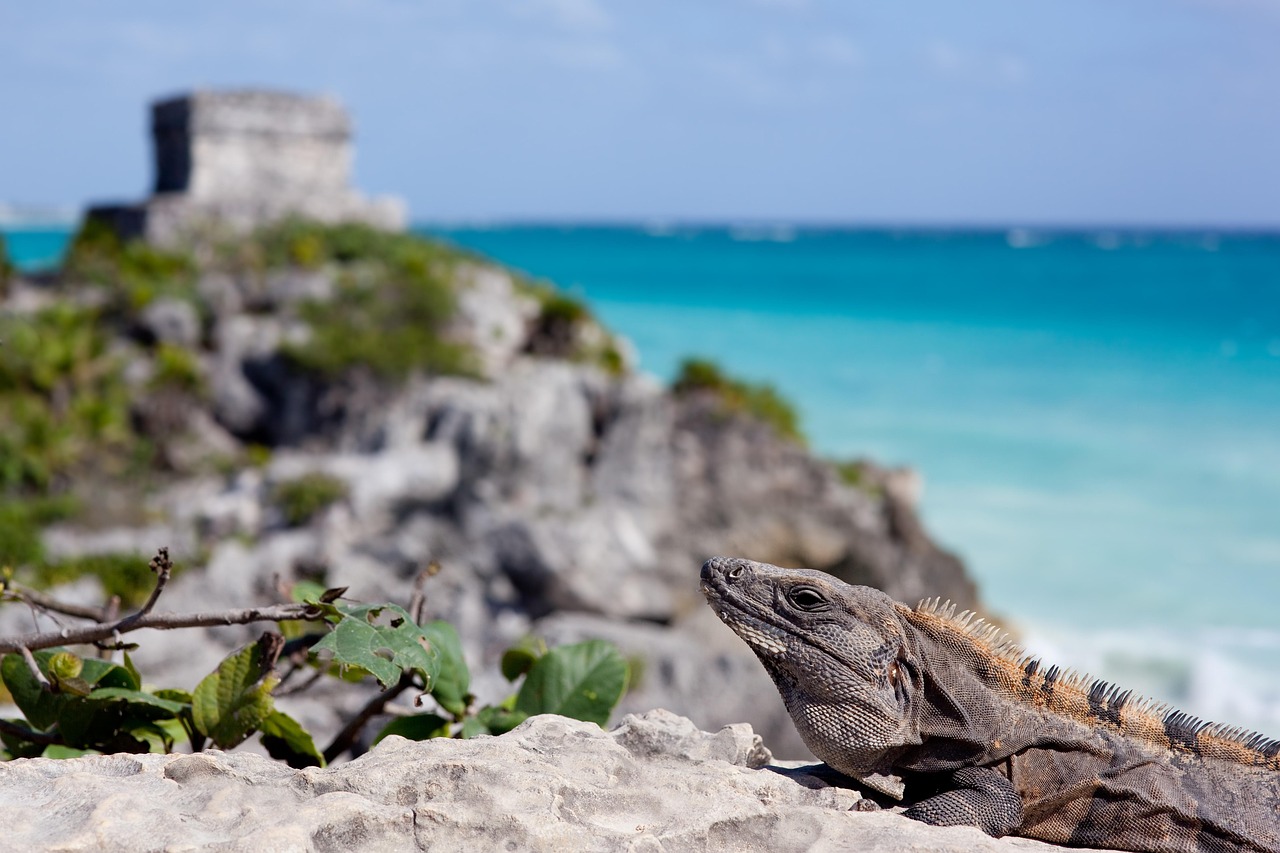The Interconnectedness of Tulum’s Ecosystems and Jaguar Preservation
Tulum, renowned for its pristine beaches and the ruins of the ancient Mayan civilization, is also a vital ecosystem with rich biodiversity. This coastal paradise lies within the broader Mesoamerican biological corridor, which plays a crucial role in the preservation of various species, including the elusive jaguar (Panthera onca). Understanding the interconnectedness of Tulum’s ecosystems is fundamental to efforts aimed at conserving not only the jaguar but also the intricate network of flora and fauna that bolster environmental health.
The Unique Ecosystems of Tulum
-
Coastal Ecosystems: Tulum’s coastal region, featuring both marine and terrestrial elements, includes beaches, mangrove forests, and coral reefs. These habitats are interdependent, with mangroves acting as nurseries for marine species and as critical buffers against climate change and storm surges.
-
Mangrove Swamps: Mangroves, characterized by salt-tolerant trees, serve as essential breeding and feeding grounds for numerous marine species. They support a wide range of wildlife, including birds, reptiles, and fish, creating a biodiverse habitat that is intertwined with the jaguar’s habitat.
- Sian Ka’an Biosphere Reserve: This UNESCO World Heritage Site is one of Mexico’s most ecologically diverse regions. Sprawling over 1.3 million acres, Sian Ka’an integrates tropical forests, wetlands, and coastal zones. It is a crucial habitat for jaguars, whose survival is intricately linked to the preservation of these ecosystems.
Jaguar as a Keystone Species
The jaguar is regarded as a keystone species, meaning its presence has a disproportionately large impact on the structure of its ecological community. By regulating populations of herbivores such as deer and peccaries, jaguars maintain the balance necessary for forest and coastal health. This predator-prey relationship helps to prevent overgrazing, allowing vegetation to flourish and ensuring the stability of these ecosystems.
The Role of Habitat Connectivity
-
Wildlife Corridors: Conserving jaguar populations in Tulum requires maintaining and enhancing wildlife corridors. These corridors allow for the safe movement of jaguars between habitat patches, reducing the risks associated with inbreeding and genetic bottlenecking. The Mesoamerican Biological Corridor aims to connect fragmented habitats across countries, facilitating the migration of jaguars and other species.
- Impact of Urbanization: The rapid development of Tulum into a tourist hotspot has resulted in habitat fragmentation, which threatens the survival of the jaguar. By promoting responsible tourism and sustainable development, it is possible to curb the encroachment of urban areas into critical habitats.
Restoration and Conservation Efforts
-
Community Involvement: Engaging local communities in conservation efforts is vital for the sustainability of Tulum’s ecosystems. Initiatives that promote eco-tourism and educate residents about the importance of jaguars and their habitats can foster a sense of stewardship.
- Protected Areas: Expanding protected areas in Tulum is crucial for creating safe havens for jaguars. These areas not only safeguard the species but also protect the myriad of creatures that coexist within these ecosystems.
Biodiversity and Ecotourism
Ecotourism can be a powerful tool for generating revenue while promoting the conservation of Tulum’s biodiversity. Guided tours focusing on wildlife, including jaguars, can raise awareness and funds necessary for ongoing conservation projects. Costa Maya, known for its eco-friendly initiatives, exemplifies how tourism can coexist harmoniously with conservation.
Research and Monitoring
Continued research on jaguar populations and their behaviors is essential for effective conservation strategies. Organizations like Panthera have been instrumental in studying jaguars in Tulum and their interactions with other species, helping to inform policy decisions and conservation actions.
Threats to the Ecosystems
-
Climate Change: Rising temperatures and sea levels threaten the delicate balance of Tulum’s ecosystems. Coral reefs are particularly vulnerable, and as they decline, the associated marine life, including fish that jaguars feed on, also suffers.
- Illegal Activities: Poaching and illegal logging can devastate local animal populations and destroy vital habitats. Law enforcement efforts are critical in combating these activities, ensuring that both the jaguar and its surroundings are protected.
The Cultural Significance of Jaguars
In Mayan culture, the jaguar is regarded as a symbol of strength and power. Its preservation not only serves ecological purposes but also helps to maintain cultural identity and heritage. Understanding this cultural significance can bolster local support for conservation initiatives.
Final Thoughts on Ecosystem Interdependencies
The vibrancy of Tulum’s ecosystems hinges on the preservation of its jaguar population. As an apex predator, the jaguar’s role in maintaining ecological balance cannot be overstated. A collaborative approach, integrating local wisdom, scientific research, and sustainable practices, can ensure the resilience of Tulum’s intricate ecosystems. As these ecosystems thrive, so do the jaguars, reinforcing the notion that healthy habitats benefit all forms of life.
By fostering a deep appreciation for Tulum’s natural heritage and the species within it, including the majestic jaguar, we can take meaningful steps toward ensuring that this extraordinary region remains vibrant for generations to come. The interconnectedness of ecosystems not only highlights the beauty of biodiversity but underscores the importance of preserving the delicate ties that bind these systems together.







